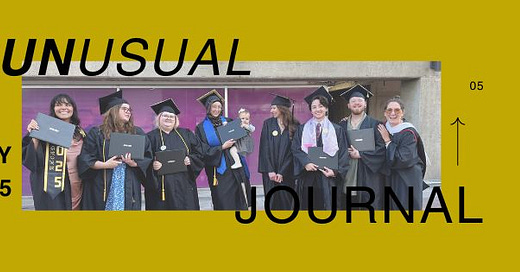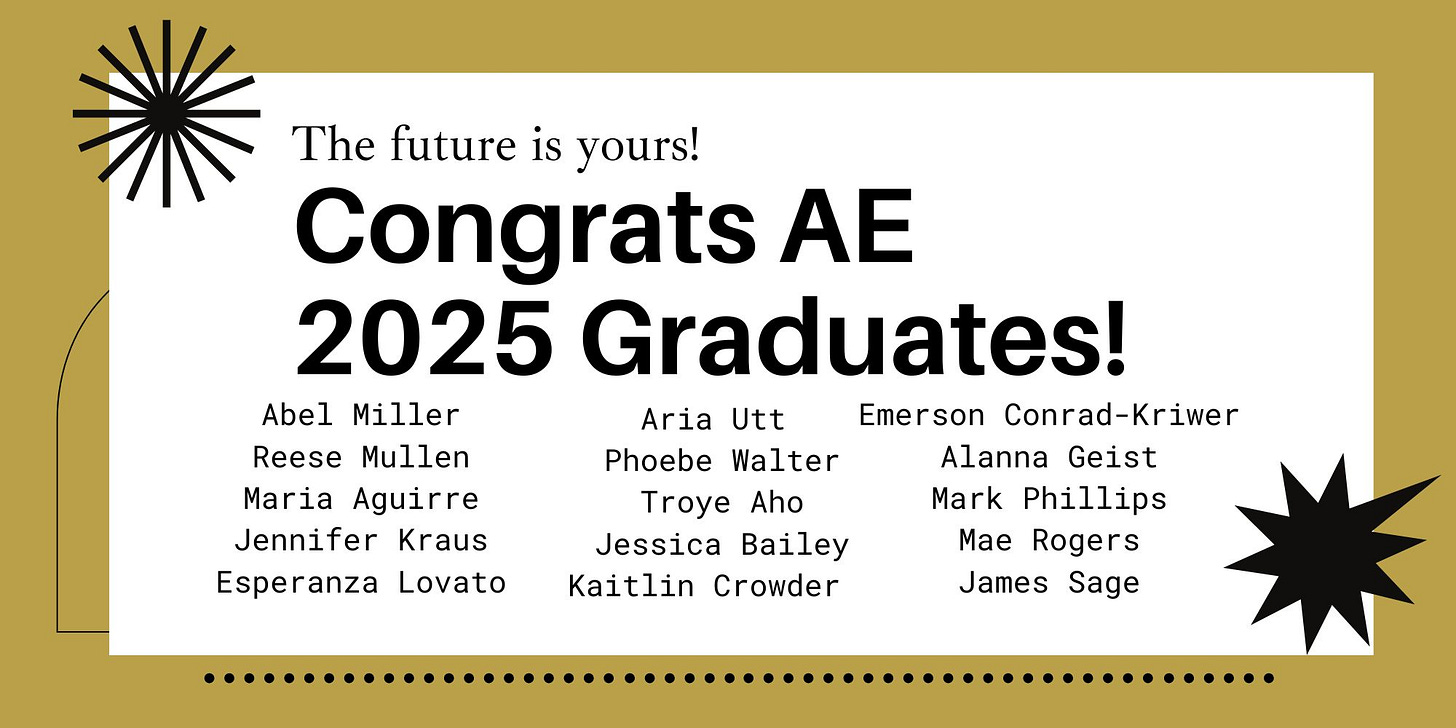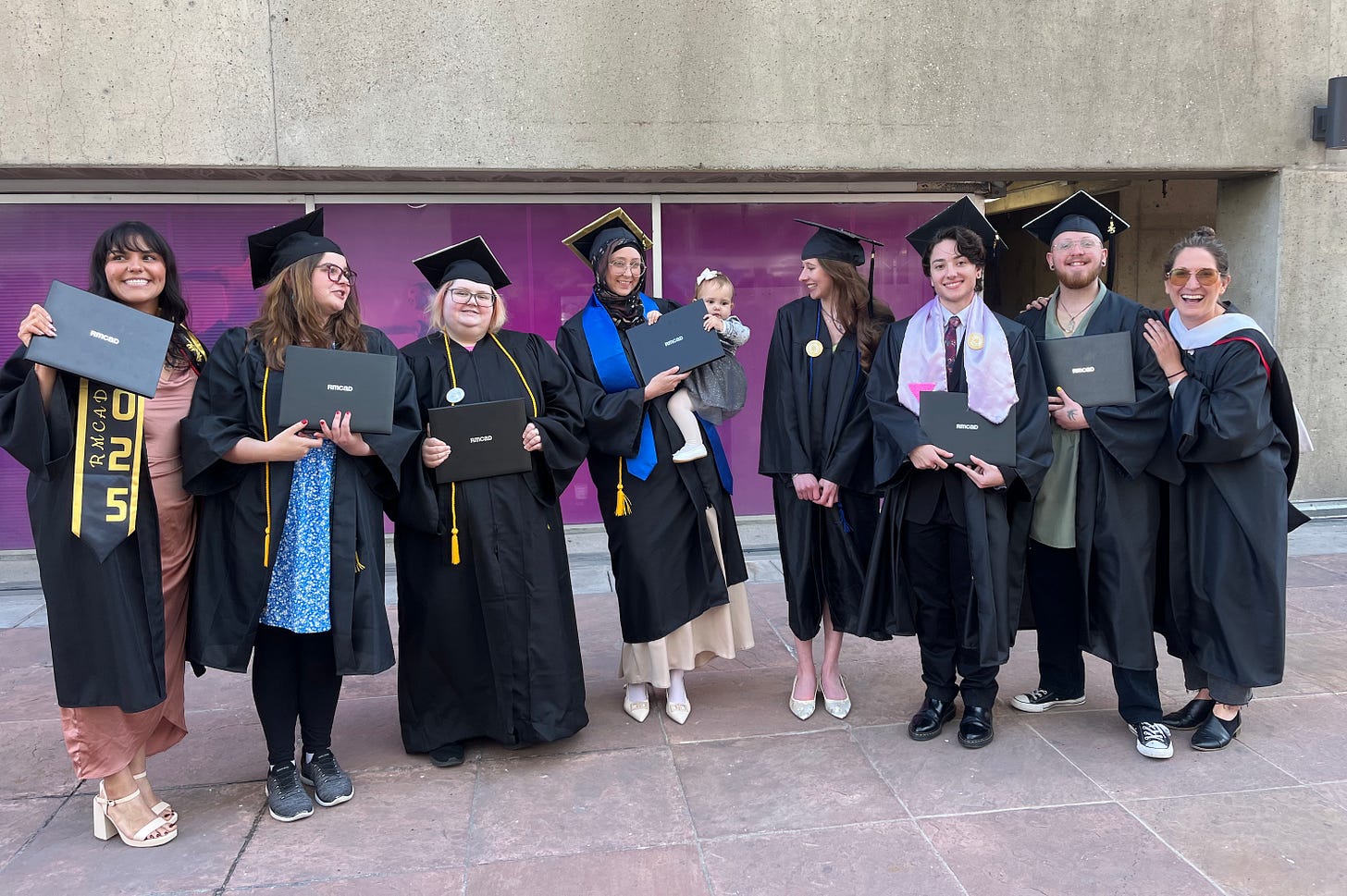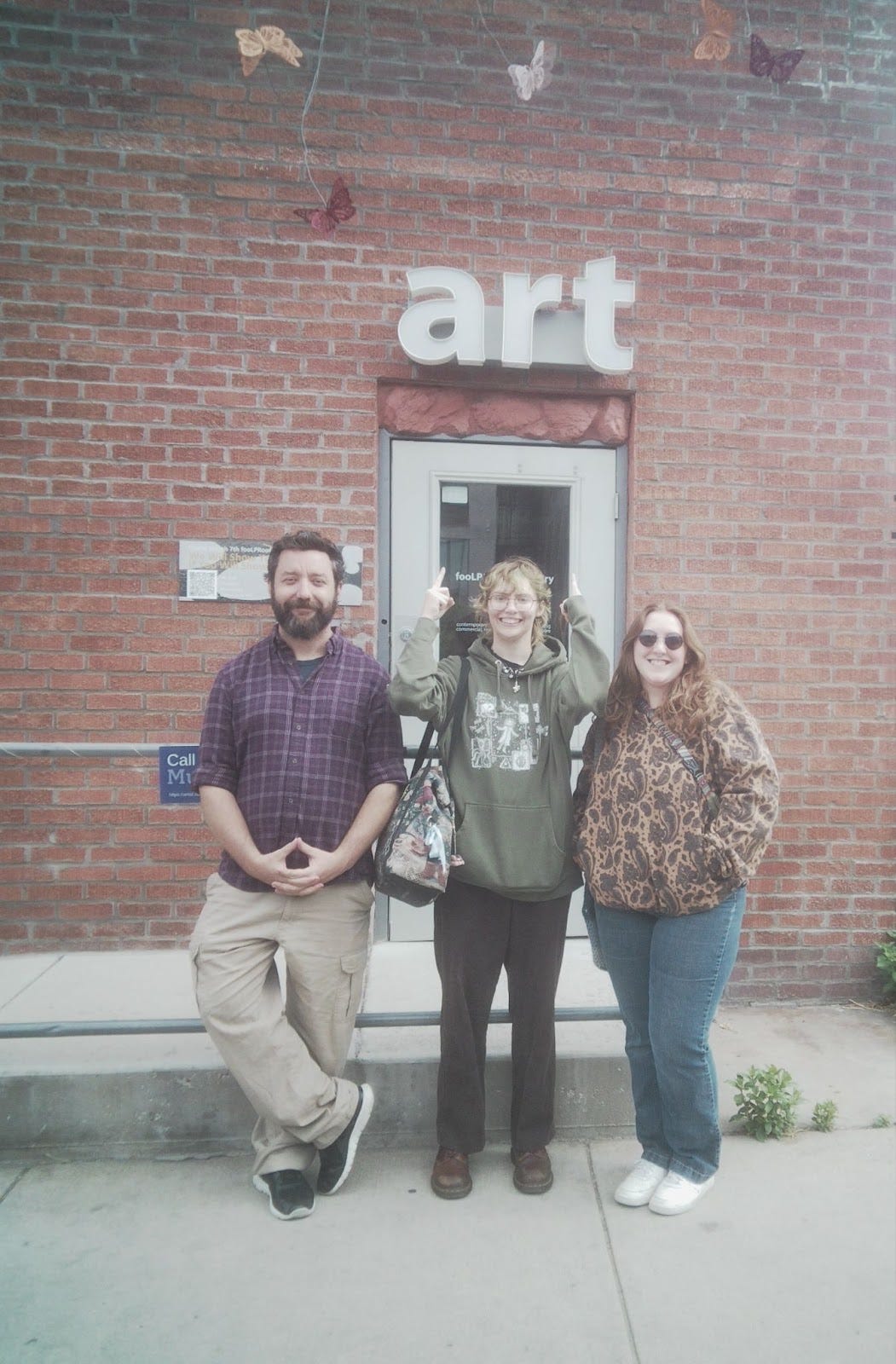[CONNECTIONS FROM THE EDITOR - PROF. SLU]
Hey Art Educators,
When planning and writing out this journal, I continue to be more and more amazed by all of the creative work and learning happening in our community of art educators. Make sure you take a moment to really deep dive into this Summer A issue. In it you’ll find both professors and students in Art Education leading with creativity in their teaching and artists pursuits.
Happy connecting,
Professor Slu
[FROM OUR DEPARTMENT CHAIR - Jenny Gawronski]
Welcome to our 2025 Summer Semester!
I hope that you had a wonderful spring and that your summer semester is off to a great start. Over the past two semesters, my messages as your Chair have encouraged you to develop your approach to receiving, processing, and implementing feedback from your RMCAD faculty members.
How have you been doing with our feedback theme? Have you been able to develop your muscles (i.e., strategies) for making sense of the feedback you receive?
As we begin our summer semester, I ask that you take time to reflect on how you read, view, or listen to faculty feedback and continue to dedicate time and effort to developing your capacity for receiving, processing, and implementing assignment feedback. You will receive feedback from students, colleagues, administrators, and families throughout your career as a teacher.
Developing your skills for making sense of feedback at RMCAD will help you shine as a professional art teacher in the future.
Do you have questions about being a student in our Art Education program? For example, who do I contact with questions about financial aid? What is a K-12 observation hour? How can I learn more about the faculty member teaching my course?
We have an Art Education Student Website that holds answers to your questions! The website includes information about our graduation requirements, AE studio course supply lists, support for finding and securing your K-12 observation hours, contact information for RMCAD advising, financial aid, mental health, and library specialists, resources for planning unit plans, faculty bios, links to our Unusual Journal, alumni information, and much more!
Please check out the website here and bookmark it for future reference.
I wish you a fantastic summer semester at RMCAD,
Jenny Gawronski
[FROM OUR DEPARTMENT HEAD - Katherine Ingui]
Make sure to connect with AE Placement Coordinator Katherine Ingui this Summer if you have any questions regarding your placements or observation hours. Friendly reminder, she will only be available in May this term - don’t be shy to reach out!
[AE ANNOUNCEMENTS]
UPCOMING SHOWS
THERESA CLOWES’ recent body of work continues a decade-long exploration of the complicated and strange predicament of having too much water and not enough simultaneously. Exploring concepts of balance, interconnectedness, and environmental resilience, Clowes bridges material, data, and theory to deepen our understanding of water’s vital role in the world.
EXHIBITION
May 9 - July 12, 2025
OPENING RECEPTION
May 9 / 5 - 8 pm
WALKER FINE ART
300 West 11th Ave #A
Denver, CO 80204

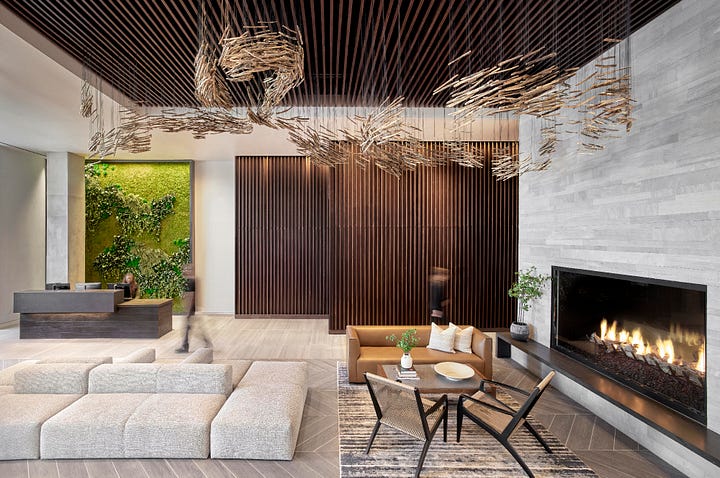
LISTEN HERE, Professor Slu talking about all things pop culture in the art classroom on the Art Ed Radio Podcast, Episode 461.
Check out the digital copy (physical copy forthcoming) of Mosaic: Creators and Educators of RMCAD. Featuring Art Education Professors Emily Knight, Ligel Lambert, and Andrea Slusarski.
[AE DEPARTMENT CONNECTIONS]
2025 Student Symposium - Nature!
Interview with AE Scholars Lucus Johnson and Mark Phillips
by Associate Professor, A. Slusarski
This March at the fifth annual RMCAD Student Symposium, the Art Education Department was in full force! It was so great to see so many AE students presenting plus in attendance this year held at the Denver Botanic Gardens.
As always, I’m so stoked for students who push their creative thinking into new territories. A presentation at the Student Symposium is an excellent creative opportunity to merge your artist / educator / researcher selves into a body of work and presentation.
I was curious and wanted to know more about the students’ experiences with the Symposium this year, so I reached out to AE artists with three questions to ponder.
Tell us about your presentation? What drew you to the theme of “Nature”?
What was being in the Student Symposium like? What was your biggest takeaway?
What would you say to your AE classmates about getting involved?
Hoping they might spark some deeper reflection into their work and process. I was grateful to get the thoughtful responses from students Mark Phillips and Lucus Johnson. Check out their answers below & get inspired to submit your own proposal for the 2026 Symposium!
Tell us about your presentation? What drew you to the theme of “Nature”?
MARK P: I think that I was drawn to the theme this year because I love nature and natural processes, which often includes death or dying. The world that exists around us is so beautifully strange, sometimes dark, and always surprising. As a morbid little fella, of course I would take this opportunity to talk about death and what that means in nature. Grief takes a center stage in a lot of my art as well as being entwined in my life forever. This is not a unique experience-- I feel like topics related to death get pushed away because it's uncomfortable to talk about which is why I am so passionate about being very forward about it.
LUCUS J: The hallmark of a good prompt is the open-ended inspiration it provides. In this case, hearing the theme of nature made me consider all the contexts in which it could be used. The two big ideas I kept going back to were “human nature” and “natural world”. These concepts related perfectly to a piece I had been conceptualizing for about a year prior… Which ended up becoming the Symposium piece “Fantasy Years”. I was intrigued by human nature and the natural world both being products of all that came before, a theme that guided the creation of my work and presentation.
What was being in the Student Symposium like? What was your biggest takeaway?
MARK P: This is my second year being in the symposium, so you can assume that it's something I enjoy doing. I love talking; I love talking to people, I love talking at people, I love talking to myself. When given the opportunity to have a captive audience, I take it with no questions asked.
LUCUS J:I found the Student Symposium to be a perfect blend of the academic and creative aspects that have been prevalent throughout my life. A guiding principle throughout my practicum education work is using art as a means of expressive problem solving. The “problem” here being that for a long time I had this idea for a piece but kept running into creative roadblocks every time I started a draft of it. It wasn’t until I stopped trying to force the work to materialize and actually took time to reflect that any progress was made. Over winter break, I visited my late grandparents’ house for the first time in almost four years; where I found tangible inspiration for the piece. Using both my artwork and presentation to articulate the variety of emotions I felt was an incredible learning experience that taught me a lot about myself as an artist, educator, and human being.
What would you say to your AE classmates about getting involved?
MARK P: To anyone who wants to get involved-- do it. I'm a freak of nature and I love the thrill of public speaking. Truly, nothing feels quite as good as getting off stage knowing that you made it through a presentation that people listened to. Even if you don't think you'll be good at it, I recommend taking the leap of faith and doing it anyway. Best case scenario, you win some money. Worst case scenario, it's ten minutes of your life you tried something new.
LUCUS J: Do it! It’s a great opportunity to utilize your creativity in a scholarly setting… Which is what art education is all about. The professional development that comes with preparing and presenting for the Symposium is also something that you can and will use in your professional practice going forward. As an art educator, you’ll be giving students a lot of prompts to create work with… So why not get a taste of your own medicine? (Also, it looks great on a CV.)
Read more about the Student Symposium Show here.
Check out more from these amazing art educators & artists!
MARK PHILLIPS
+ CaliberCritter.straw.page (portfolio website)
@CaliberCritter (Tumblr)
LUCUS JOHNSON
+ lucusjohnson.com (portfolio website)
+ operationoddity.com (clothing)
@operationoddity (instagram handle)
June 30 - August 22, 2025 (Alter Ego exhibition at Rude Gallery)
Pizza Party Reflections
By Associate Professor, A. Slusarski
If you’ve taken AE2230 Psychology of Creativity, you’ve heard my pitch, but if you haven’t yet or you need a lecture refresh, you can watch the video here on AE2230: WK1 - What is Creativity? Where I share my creativity analogy on how it’s a lot like pizza.
In my own teaching reflections on teaching this past term, I continue to learn how to better celebrate student learning and find creative connections to opportunities to extended learning.
This past term we had two RMCAD VASD events that lined up perfectly with our learning content. We couldn’t have asked for better connection-making. We attended an artist talk and gallery walk by RMCAD Professor Jai Jensen. READ MORE ABOUT THE SHOW HERE.
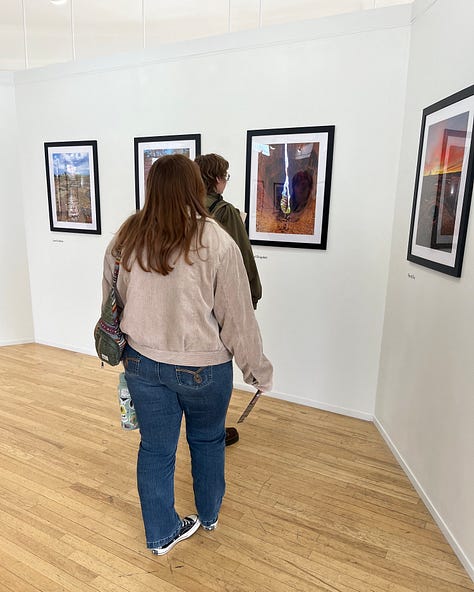
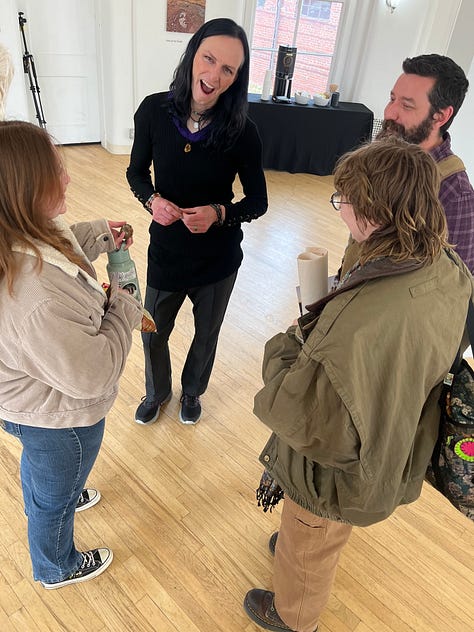

Students also attended a Live Performance in the Mary Harris Auditorium by ãññã duo.
This was an incredible experience to have with students! What a great example of creativity and connections to flow in the creative process.
There were many connections we were able to weave in experiences in and outside of the classroom. However, my favorite continues in the “Final Celebration” Pizza Party at Redeemer followed by the mural walk in Denver’s RiNO Arts District.
Here are some photos shared by students. This space, a back-alley pizza joint, is where students can enjoy delicious pizza and truly connect with their final course reflections. We discuss the pizza creativity rating (Redeemer - 10/10 creative points by the way), the final chapter in Learning by Heart, then walk around together admiring the fantastic collection of murals. Most importantly, I like to laugh with and encourage my students to keep living creatively through our final celebration aka fun together.

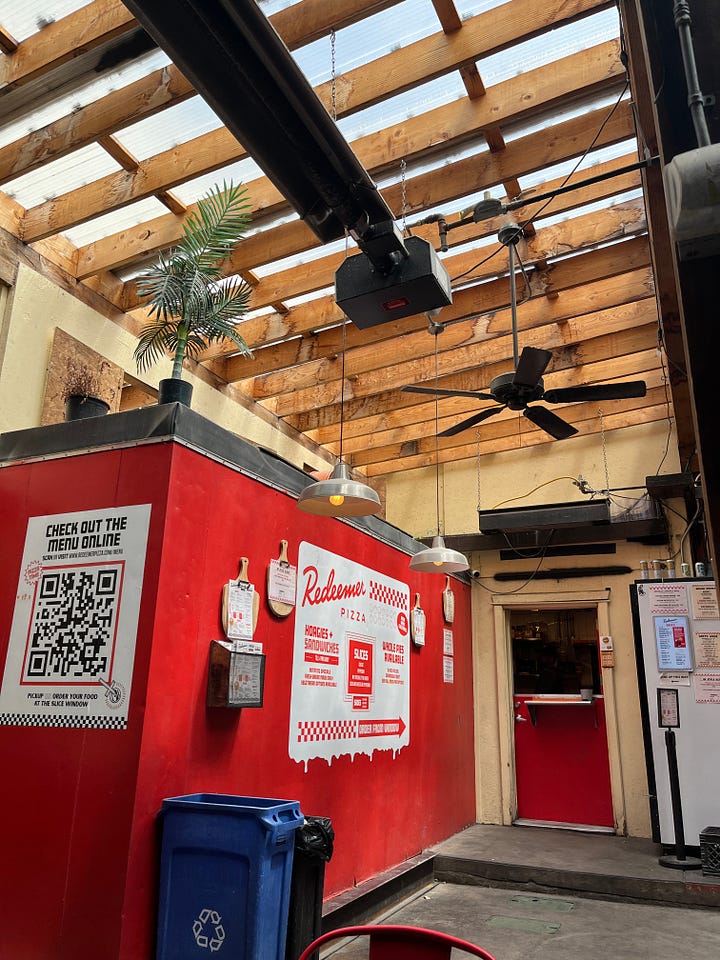
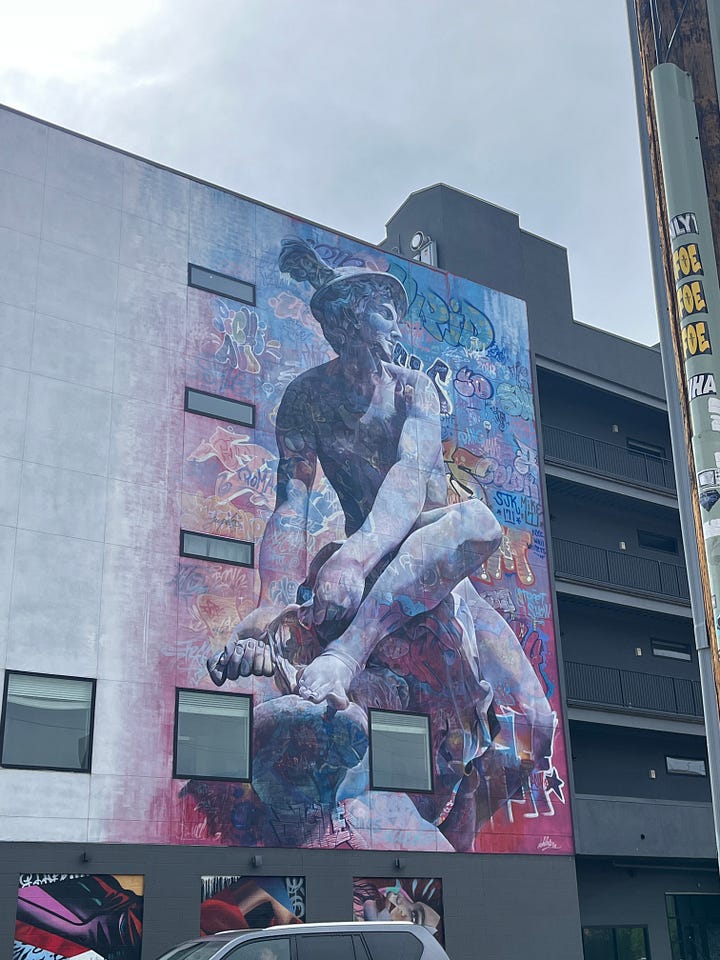
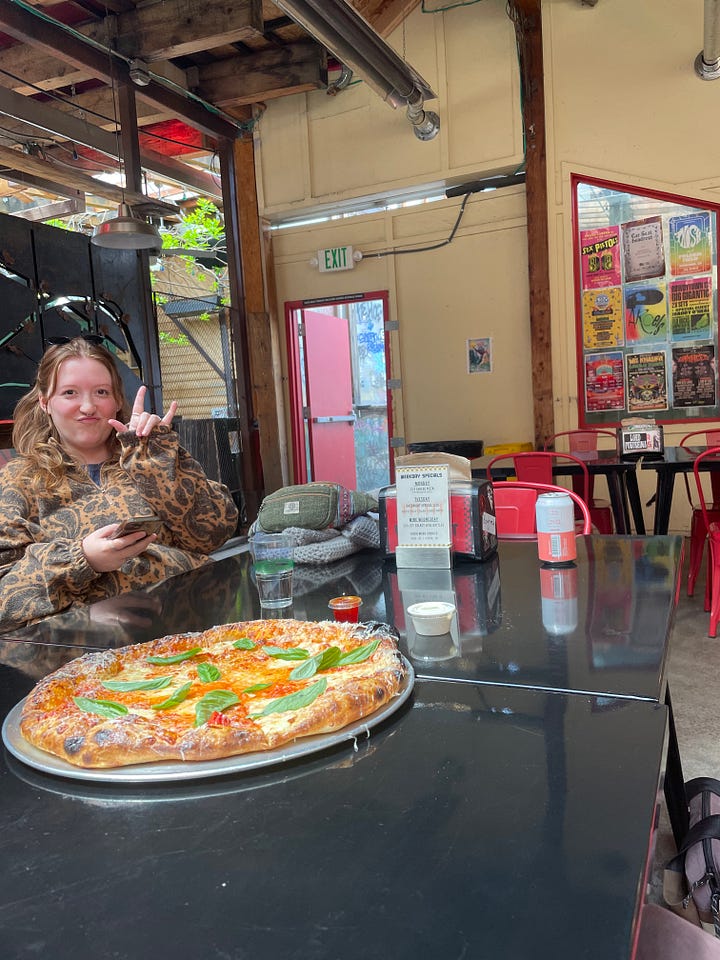
Pizza Party as an intentional celebratory act.
Celebrating as a learning strategy to improve personal meaning and connection to learning content. Or maybe its just as simple as Parks and Recreation character April Ludgate puts it,
“Time is money, money is power, power is pizza and pizza is knowledge.”
creative exercise to try at home
Think of your favorite pizza. Close your eyes and imagine - where is it from? What makes it special? Why is this the pizza for you?
Write it down, describe it in your visual journal.
Connect how your favorite slice of pie is uniquely yours, based on your own experiences - like where you are from to your personal flavor preferences. Types of pizza, like creativity, is best when it is in multitudes.
Make a doodle of your favorite pizza.
Next, explore the Crust, Sauce, and Topping through metaphor.
Crust = Your foundation for Creativity
Sauce = Your histories and beliefs of Creativity
Toppings = What you uniquely bring to Creativity
See how this reflection connects to your creativity pedagogy?
[AE Department BONUS CONNECTIONS]
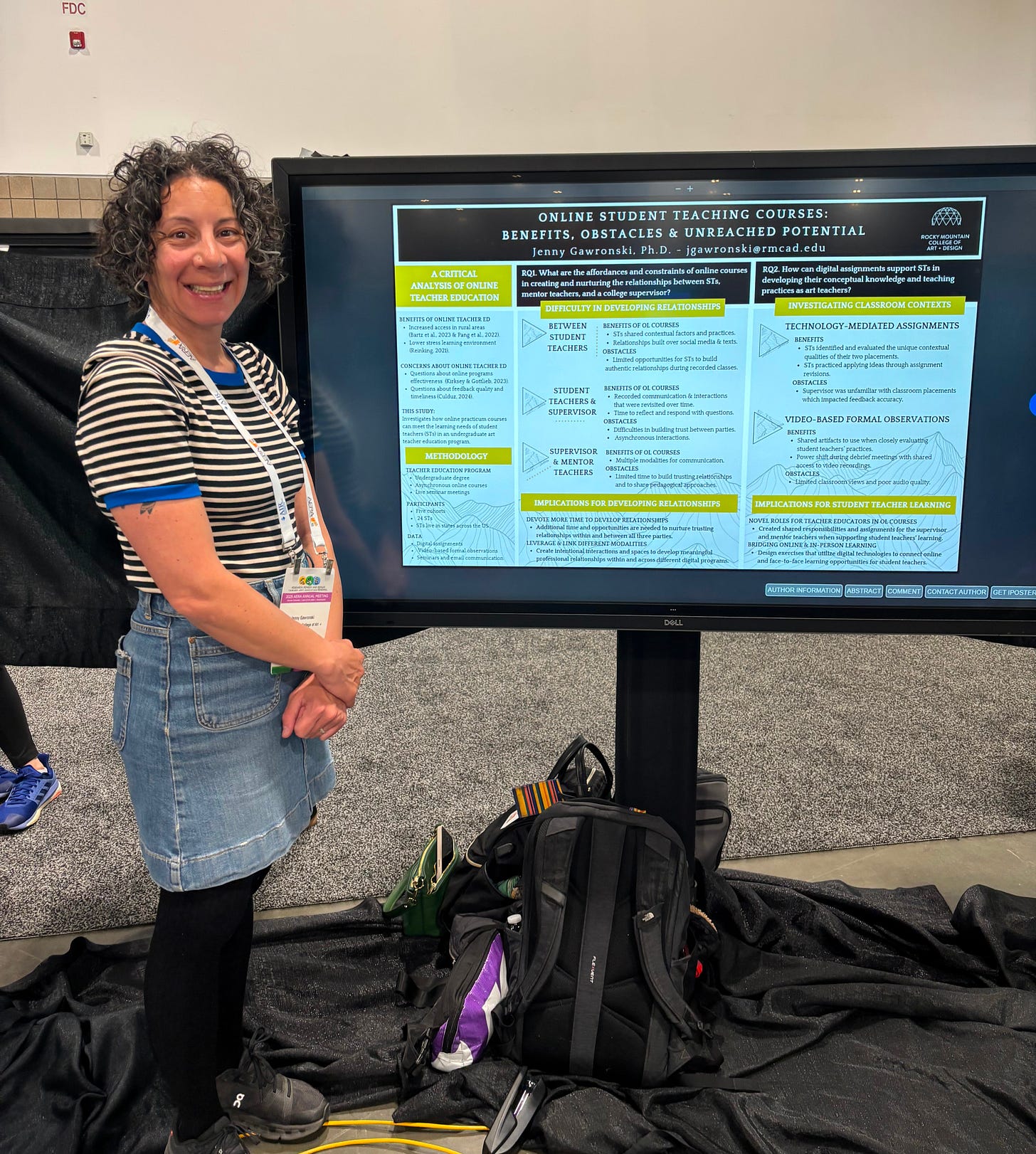
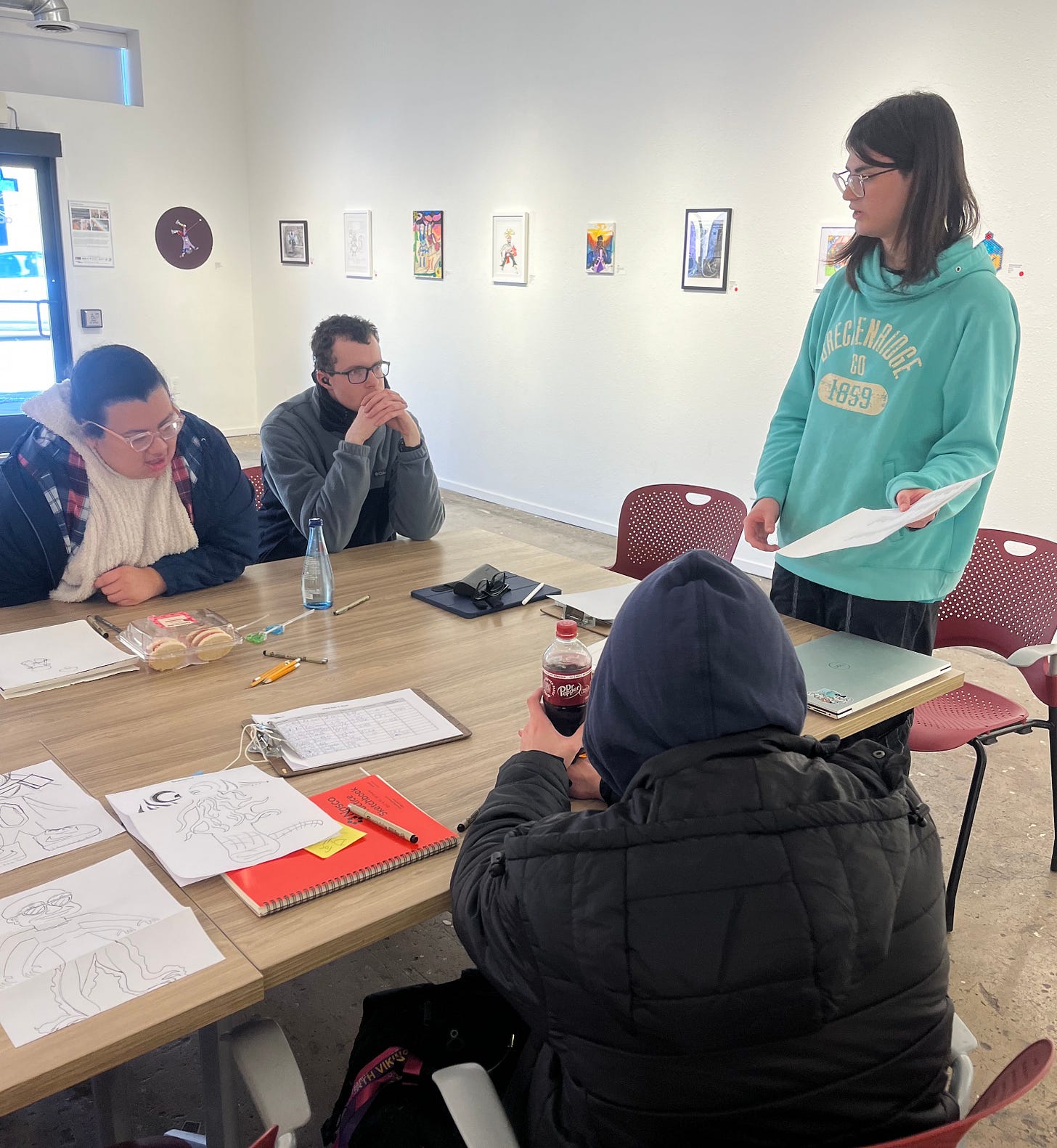

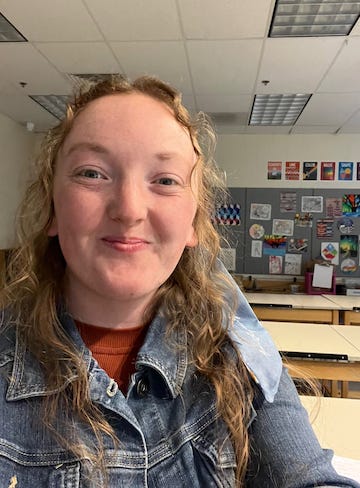
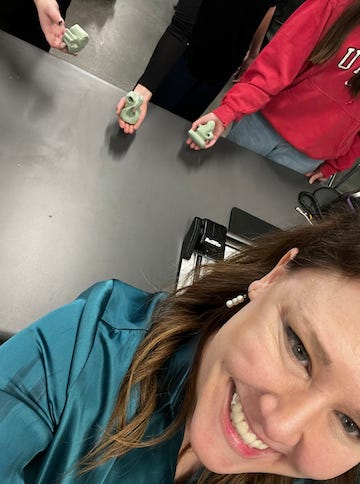




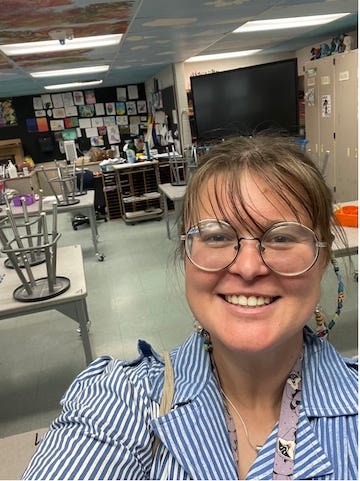

Feat.
Lucus Johnson: @operationoddity
Sophia Trey: @phiatcreates
Mark Phillips: CaliberCritter.straw.page (website)


